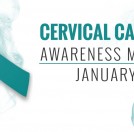5 Keys to Safer Food – Simple Steps to Cut the Cost
Salmonella, E. coli, Campylobacter are the three most common diseases contracted due to eating or drinking food and or beverages that were contaminated with the said microbes or pathogens. The first two disease-causing pathogens often result to recall food products off the market. But these and other more food borne diseases are all preventable only with proper handling and preparation.
In view of preventing foodborne diseases, WHO Member States push to educate the public about ways on how to ensure the food being served in the table are safe for everyone. WHO’s global message “Five Keys to Safer Food,” is disseminated through schools’ educational programs, hospitals, local health care centers, canteens, and restaurants in developing and industrialized countries. But having this information at home would create an even greater impact. And through blogging, I hope to be of help in creating awareness among readers, encouraging them to practice these five steps right in their homes.
 1 Keep Clean
1 Keep Clean
Why? While most microorganisms do not cause disease, dangerous microorganisms are widely found in soil, water, animals and people. These microorganisms are carried on hands, wiping cloths and utensils, especially cutting boards and the slightest contact can transfer them to food and cause foodborne diseases.
Ways to ensure cleanliness:
Wash your hands before handling food and often during food preparation
Wash your hands after going to the toilet
Wash and sanitize all surfaces and equipment used for food preparation
Protect kitchen areas and food from insects, pests and other animals
2 Separate Raw and Cooked
Why? Raw food, especially meat, poultry and seafood, and their juices, can contain dangerous microorganisms which may be transferred onto other foods during food preparation and storage.
What and how to separate raw and cooked foods:
Separate raw meat, poultry and seafood from other foods
Use separate equipment and utensils such as knives and cutting boards for handling raw foods
Store food in containers to avoid contact between raw and prepared foods
3 Cook Thoroughly
Why? Proper cooking kills almost all dangerous microorganisms. Studies have shown that cooking food to a temperature of 70°C can help ensure it is safe for consumption. Foods that require special attention include minced meats, rolled roasts, large joints of meat and whole poultry.
How to cook thoroughly:
Cook food thoroughly, especially meat, poultry, eggs and seafood
Bring foods like soups and stews to boiling to make sure that they have reached 70°C. For meat and poultry, make sure that juices are clear, not pink. Ideally, use a thermometer
Reheat cooked food thoroughly
4 Keep Food at Safe Temperatures
Why? Microorganisms can multiply very quickly if food is stored at room temperature. By holding at temperatures below 5°C or above 60°C, the growth of microorganisms is slowed down or stopped. Some dangerous microorganisms still grow below 5°C.
How to handle food in safe temperatures:
Do not leave cooked food at room temperature for more than 2 hours
Refrigerate promptly all cooked and perishable food (preferably below 5°C)
Keep cooked food piping hot (more than 60°C) prior to serving
Do not store food too long even in refrigerator
Do not thaw frozen food at room temperature
5 Use Safe Water and Raw Materials
Why? Raw material, including water and ice, may be contaminated with dangerous microorganisms and chemicals. Toxic chemicals may be formed in damaged and moldy foods. Care in selection of raw materials and simple measures such as washing and peeling may reduce the risk.
How to make water and raw materials safe:
Use safe water or treat it to make it safe
Select fresh and wholesome foods
Choose foods processed for safety, such as pasteurized milk
Wash fruits and vegetables, especially if eaten raw
Do not use food beyond its expiry date
Ending up in the hospital bed is the least thing anyone would need. We don’t scare ourselves with the impending hospital cost whenever we see those people in lab coats and white scrubs. We can keep ourselves and the entire family safe by making everyone knowledgeable with these simple steps.
Source: WHO







